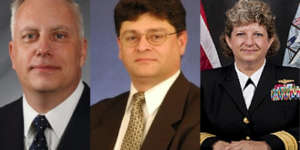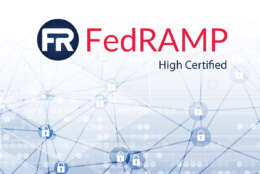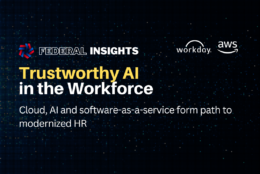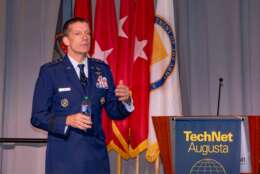Hubbard Radio Washington DC, LLC. All rights reserved. This website is not intended for users located within the European Economic Area.
On Air: Federal News Network
Cloud Security
Sponsored by


During Cloud Month, read about why a federal transition to the technology has to be approached from a holistic perspective.
Read moreNaval Supply Systems Command launched its digital accelerator project a few months ago in hopes of leveraging its existing data. Meanwhile the Department of Transportation wants to reduce its dependency on headquarters.
At this month’s ATARC Cloud & Data Center Summit in Washington, D.C., David Nelson of the Nuclear Regulatory Commission and Todd Simpson gave their outlooks on cloud migration.
The Cloud Security Alliance is teaming with FedRAMP to create a combined cloud security certification known as FedSTAR, which could improve effectiveness and efficiency for private-sector companies by cutting down on duplicate requirements.
-
OMB’s new FedRAMP policy takes aim at the pain points
Drew Mykelgard, the deputy federal chief information officer at OMB, said the updated FedRAMP policy pushes for more automation, reciprocity.
-
Ready, set, run: Meeting users’ tech expectations and needs now
Everyone wants everything in real time (or almost). Tech leaders from CACI, Future Tech, MITRE and SAIC share the impact that has on lifecycle management.
-
Protected: Cloud, AI and software-as-a-service form path to modernized HR
Human resources applications, which touch everyone in the agency, provide a great use case for getting good with cloud, AI and software-as-a-service.
-
FedRAMP’s 2 new efforts target long-time vendor frustrations
The cloud security program launched two programs, an agile delivery pilot and a new technical documentation hub, to accelerate cloud authorizations.
-
Modernize to location-agnostic applications
A goal of modernized, containerized applications: You can easily deploy it in the cloud, in your data center, or at the edge.
-
Resolving federal hybrid cloud challenges with AI and automation
As government networks load up on new data and applications, gaining visibility over modern IT estates has become more difficult than ever.
-
DISA’s Skinner not a fan of ‘wooden shoe’ IT services
Lt. Gen. Robert Skinner, the director of the DISA, said DoDNet users must change their processes versus asking for unique IT services.
-
Cloud Exchange 2024: CMS’ Andrea Fletcher, Remy DeCausemaker on extending digital services through open source
The Centers for Medicare & Medicaid Services sees The Centers for Medicaid & Medicavalue and ease of open source software in developing new capabilities faster.












